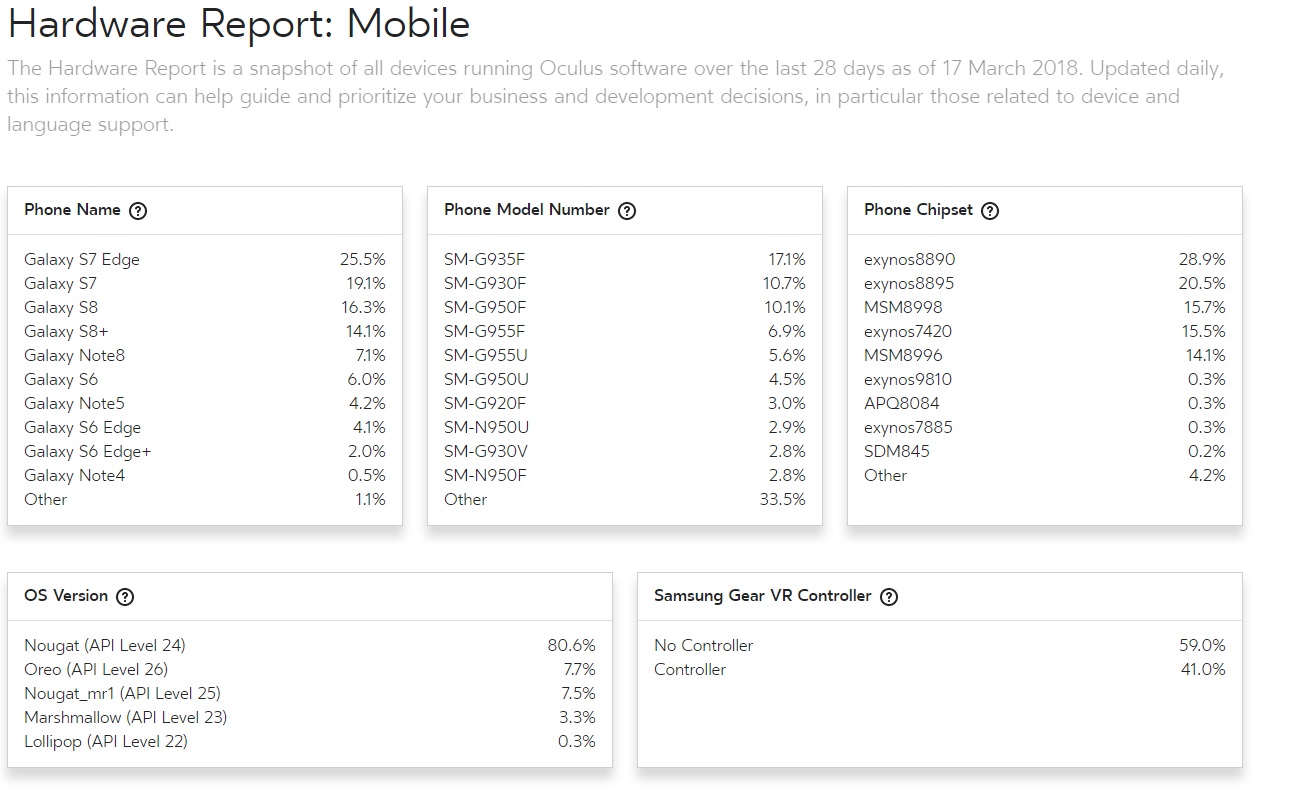Developers will no longer have to rely on third-party software to gather data on how customers respond to their Oculus apps.
Today, Oculus is introducing Hardware Reports for both Rift and Gear VR. Simply put, these systems provide developers (or anyone with a passing interest) with aggregated statistics on the Oculus platform. On the Rift side, the report will provide information like the most-used CPUs, GPUs and operating systems as well as average play area sizes. It’s a little like Steam’s monthly hardware survey, though specifically tailored towards VR.

So, if you were making a Rift app today, for example, you’d take note of the fact most users are running GTX 1070 graphics cards on Windows 10 with an Intel CPU. You might also take into account most users have a play space of between 2.0 – 2.5m width and 1.5 – 2.0m depth when designing your app. All stats are taken from all devices running Oculus software over the last 28 days with daily updates.
On the mobile side, you’ll get full reports of the most popular smartphones for Gear (currently the S7 edge), which version of Android is being used the most (Nougat!) and the percentage of the install base using the new motion controller launched last year (41%).
The app doesn’t reveal all the juicy details prying eyes might hope (there’s no statistic detailing Touch usage, for example), but it certainly gives developers some interesting states to bear in mind.


























